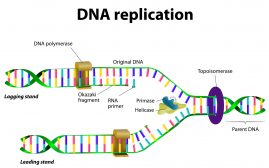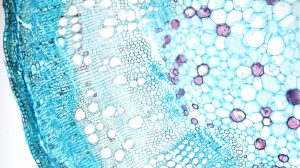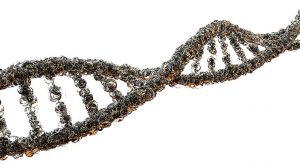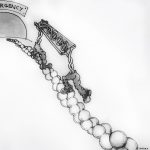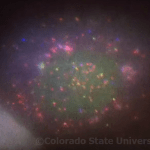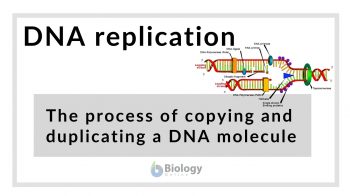
DNA replication: the process of copying and duplicating a DNA molecule
Table of Contents
DNA Replication Definition
DNA replication is the process of copying and duplicating a DNA molecule. The process is carried out in a semiconservative way. This means that the new DNA molecule will consist of two strands: one that is newly created and the other is the original strand.
Importance of DNA Replication
DNA carries the genetic information that codes for a particular protein. Thus, DNA molecules have to be replicated prior to cell division to ensure that the two cells after cell division will have the same genetic content. In the early stages of mitosis (prophase) and meiosis (prophase I), DNA is replicated in preparation for the late stages where the cell divides to give rise to two cells containing copies of DNA. Thus, after replication, the new DNA molecule will be checked through stringent proofreading and repair mechanisms.
DNA Replication Process
DNA replication begins with the unwinding of the DNA strands. Through the action of the enzyme helicase, a portion of the helix will “open” as the two strands separate. The point at which the strands separate is referred to as the replication fork (replication fork is a Y-shaped region in a chromosome that serves as the growing site for dna replication.).
To remain separated, single-stranded binding proteins will bind to these strands. The enzyme primase will then attach a primer (a short fragment of RNA). Another group of enzymes, called the DNA polymerases, will extend the primer, moving along the template strand from the 3’ end to the 5’ end while adding nucleotides to the previous nucleobase. (Ref. 1) The purine nucleobase (i.e. adenine and guanine) will pair with the pyrimidine nucleobase (i.e. cytosine and thymine). In particular, adenine will pair with thymine while guanine with cytosine.
DNA polymerases, though, can move in only one direction, i.e. from 3’ end to 5’ end. Thus, one of the original DNA strands will allow the polymerase to move along the strand and add nucleotides continuously. This strand is called the leading strand. The other strand, called the lagging strand, runs in the opposite direction. Thus, the polymerase in the lagging strand tends to create short fragments (called Okazaki fragments) that are later joined together by DNA ligase. After the new strand is created, the primers are removed by RNAse H. (Ref. 1)
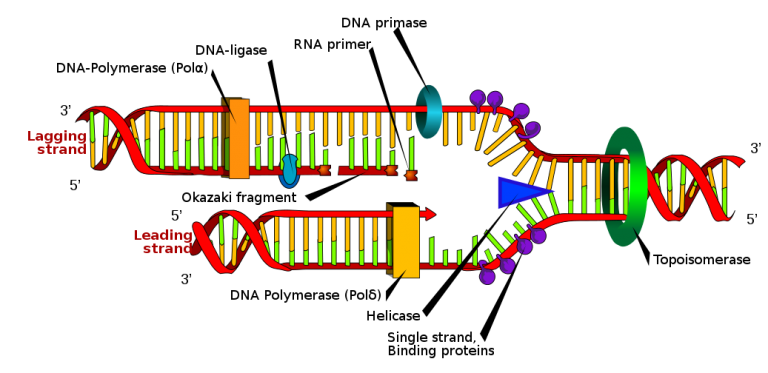
See Also
- DNA
- Replication fork
- DNA polymerase
- Polymerase chain reaction
References
- DNA replication. (2017, April 26). Uq.Edu.Au. https://di.uq.edu.au/community-and-alumni/sparq-ed/sparq-ed-services/dna-replication
Additional resource
- Eukaryotic DNA replication with Bruce Stillman- BioTechniques. (2020, April 16). BioTechniques. https://www.biotechniques.com/omics/bruce-stillman-on-eukaryotic-dna-replication/
©BiologyOnline. Content provided and moderated by BiologyOnline Editors.
